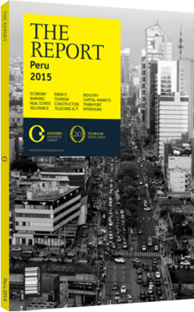Alicia Bárcena, Executive Secretary, Economic Commission for Latin America and the Caribbean (ECLAC): Interview

Interview: Alicia Bárcena
How much of a concern is protectionism, especially for small and medium-sized enterprises (SMEs)?
ALICIA BÁRCENA: There is still a lot to do to ensure more efficient integration of trade in the region and of SMEs in the value chain. When SMEs work individually, they are sometimes faced with issues due to their size and limited negotiation capacity. We need to understand that Latin America’s full potential ultimately lies in interregional trade of not only finished products, but intermediate goods and services as well. The region needs to start thinking as a unit to compete on a global scale.
Initiatives such as the Pacific Alliance (PA), aimed at economic integration and therefore cognisant of the role that private companies must play, are very important. The PA’s biggest challenge is increasing regional trade, which stands at only 4% – compared to 19% in Latin America and the Caribbean and 59.1% in Europe. The key is understanding that it is not about competing against one other, but about finding synergies that will make us more efficient and competitive.
What is the solution to poor competitiveness in innovation and value-added activities in the region?
BÁRCENA: Countries like Peru need to evolve beyond comparative advantages (mineral commodities in this case). A portion of the revenues from high commodity prices in the past few years should be used to promote other, more dynamic sectors with the capacity to generate greater added value and produce goods that both create knowledge and foster innovation.
In recent years, regional growth has been linked more to consumption and exports than efforts at increasing investment. The risk of this model lies in the imbalance between the consumption of imported goods and those produced locally. Simply put, industrial policies need to be revised. A plan needs to be jointly created by the government, the market and society to pinpoint sectors with the greatest potential and dynamism and then focus on promoting them. This industrialisation process is necessary to produce more valuable final products. Existing supply chains need to identify bottlenecks and focus on sectors that hold the greatest potential, be they agribusiness, fisheries or others.
ECLAC has pushed for economies to channel foreign direct investment (FDI) into sectors that change the production matrix. What is Peru’s progress?
BÁRCENA: Peru has been able to follow through on infrastructure investment, creating a combination of public and private inputs that generate potential clusters. The FDI that is coming to the wider region, as well as Peru itself, has a greater awareness of socio-environmental impacts. This should be a main condition, along with creating employment and transferring technology. Indeed, by incorporating more technology, we can achieve greener economic growth, as seen through the benefits of greater reliance on renewable energy and more sustainable water resource usage.
Peru is making an effort to ensure that relevant matters are included in all projects being financed by domestic and foreign investments alike. This will help minimise delays for acquiring permits and improve the country’s international image. Developing a plan aimed at diversifying the country’s production matrix will help to direct FDI towards sectors with the greatest potential as opposed to letting the market decide for itself.
In what ways does security affect investment?
BÁRCENA: Both Peru and the region in general need to place greater focus on lowering levels of social exclusion and inequality. Indeed, these are prime factors behind any potential rise in insecurity. The mere existence of a segregated population, both rural and urban, not to mention the stigma associated with public services, fuels potential for civil unrest. Public has become synonymous with poverty and exclusion while private denotes power and privilege. In a society with 20% of young people neither working nor studying, the inability to access decent employment and quality public health and education can likewise lead to insecurity.
You have reached the limit of premium articles you can view for free.
Choose from the options below to purchase print or digital editions of our Reports. You can also purchase a website subscription giving you unlimited access to all of our Reports online for 12 months.
If you have already purchased this Report or have a website subscription, please login to continue.

